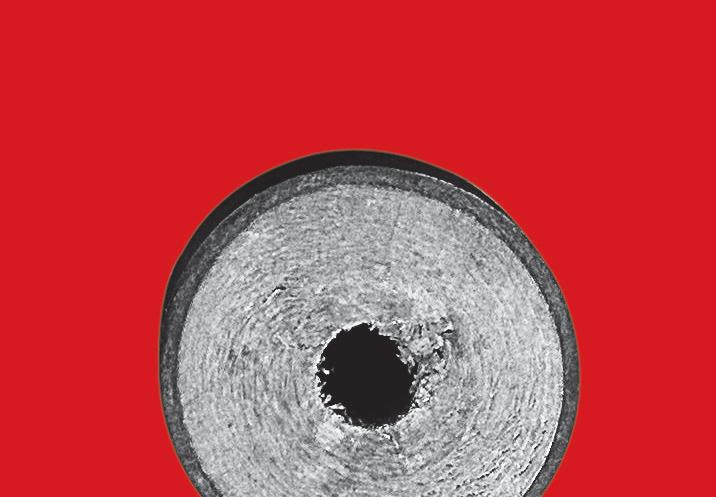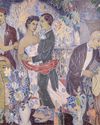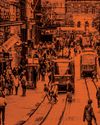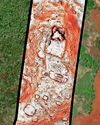
If you know how a trick is done, if you have peered through the smoke and looked past the mirrors, if you have figured out how the illusion is accomplished, surely you can no longer be fooled by it? Surely? The smoke-and-mirrors trick I thought I had seen through sits at the centre of British history, how it is generally taught and understood.
The illusion in question works like this: it marginalises the histories of slavery and empire, corralling them into separate annexes. It creates firewalls that neatly compartmentalise history, rendering almost invisible the great flows of money, raw materials, people, and ideas that moved, back and forth, between distant plantations on colonial frontiers and the imperial mother country.
It conceals the history of slavery and the slave trade behind a distorted and exaggerated memorialisation of abolition and a select number of the leading male abolitionists. It presents the Industrial Revolution as a phenomenon that sprang whole and complete from native British soil, but is suspiciously silent about the source of much of the capital that funded it and equally mute as to where certain key industrial raw materials came from and who produced them.
The trick was constructed over centuries by politicians, lobbyists, and journalists who sought to create a highly romanticised version of our national story. They were assisted by generations of historians who were equally determined to construct British history around the biographies of "great men" whose achievements, they believed, proved the nation's supposed exceptionalism. The illusion has long shaped the history delivered to us at school and, as we are not taught of the existence of the redacted and missing chapters, we have no reason to go in search of them. This approach to the past is so powerful that it is capable - as I recently discovered - of triggering a form of cognitive dissonance.
This story is from the {{IssueName}} edition of {{MagazineName}}.
Start your 7-day Magzter GOLD free trial to access thousands of curated premium stories, and 9,000+ magazines and newspapers.
Already a subscriber ? Sign In
This story is from the {{IssueName}} edition of {{MagazineName}}.
Start your 7-day Magzter GOLD free trial to access thousands of curated premium stories, and 9,000+ magazines and newspapers.
Already a subscriber? Sign In

Finn family murals
The optimism that runs through Finnish artist Tove Jansson's Moomin stories also appears in her public works, now on show in a Helsinki exhibition

I hoped Finland would be a progressive dream.I've had to think again Mike Watson
Oulu is five hours north from Helsinki by train and a good deal colder and darker each winter than the Finnish capital. From November to March its 220,000 residents are lucky to see daylight for a couple of hours a day and temperatures can reach the minus 30s. However, this is not the reason I sense a darkening of the Finnish dream that brought me here six years ago.

A surplus of billionaires is destabilising our democracies Zoe Williams
The concept of \"elite overproduction\" was developed by social scientist Peter Turchin around the turn of this century to describe something specific: too many rich people for not enough rich-person jobs.

'What will people think? I don't care any more'
At 90, Alan Bennett has written a sex-fuelled novella set in a home for the elderly. He talks about mourning Maggie Smith, turning down a knighthood and what he makes of the new UK prime minister

I see you
What happens when people with acute psychosis meet the voices in their heads? A new clinical trial reveals some surprising results

Rumbled How Ali ran rings around apartheid, 50 years ago
Fifty years ago, in a corner of white South Africa, Muhammad Ali already seemed a miracle-maker.

Trudeau faces 'iceberg revolt'as calls grow for PM to quit
Justin Trudeau, who promised “sunny ways” as he won an election on a wave of public fatigue with an incumbent Conservative government, is now facing his darkest and most uncertain political moment as he attempts to defy the odds to win a rare fourth term.

Lost Maya city revealed through laser mapping
After swapping machetes and binoculars for computer screens and laser mapping, a team of researchers have discovered a lost Maya city containing temple pyramids, enclosed plazas and a reservoir which had been hidden for centuries by the Mexican jungle.

'A civil war' Gangs step up assault on capital
Armed fighters advance into neighbourhoods at the heart of Port-au-Prince as authorities try to restore order

Reality bites in the Himalayan 'kingdom of happiness'
High emigration and youth unemployment levels belie the mountain nation's global reputation for cheeriness